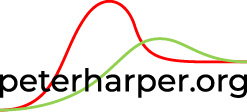Waste treatment, Water, Sanitation
The absolute basics of solid waste for householders were laid out in 2000 and have hardly changed in the meantime, except that source separation of solid waste, and routine recycling measures is now a mainstream norm:
Waste: The Basics for Householders 2000 (doc)
A two-year experiment with solid waste, logging 80% reduction in general solid waste and 95% reduction in environmental impacts, is recorded here:
Waste Minimisation in an Experimental Household 2001 (doc)
Since a large proportion of the reductions were achieved by composting, here is a slightly more focused look at composting, particularly at a domestic scale:
Home Composting from a Waste Minimisation Perspective 2002 (ppt)
On the treatment of dirty water and toilet wastes, I would recommend only the 'low-hanging fruit', but some can be successfully and usefully processed on-site in a typical domestic setting, and some nutrients recovered. This is a slide show, but most slides have explanatory notes.
Recovery of nutrients in waste water and toilet wastes (pptx)
The diagram on the right shows the application of the various processes to a domestic situation. Most people would say this was more trouble than it’s worth, but it was interesting to see how far it could be taken, and how many loops could be closed.
At CAT we were greatly concerned to save water, and prevent it becoming contaminated. We built all manner of curious dry toilets. We brought together much of what we had learned in a book, Lifting the Lid (1999).
At a lecture I was giving in Japan, a gentleman came up aftewards and asked me to sign his book. What book? I asked. He had a pirated translation of Lifting the Lid!! Some authors would be outraged at pirated enditions, but we were much tickled. Even the Japanese edition could not forbear to quote the list of rejected titles, a potent cesspool of toilet humour:
Rejected Titles for Lifting the Lid.


